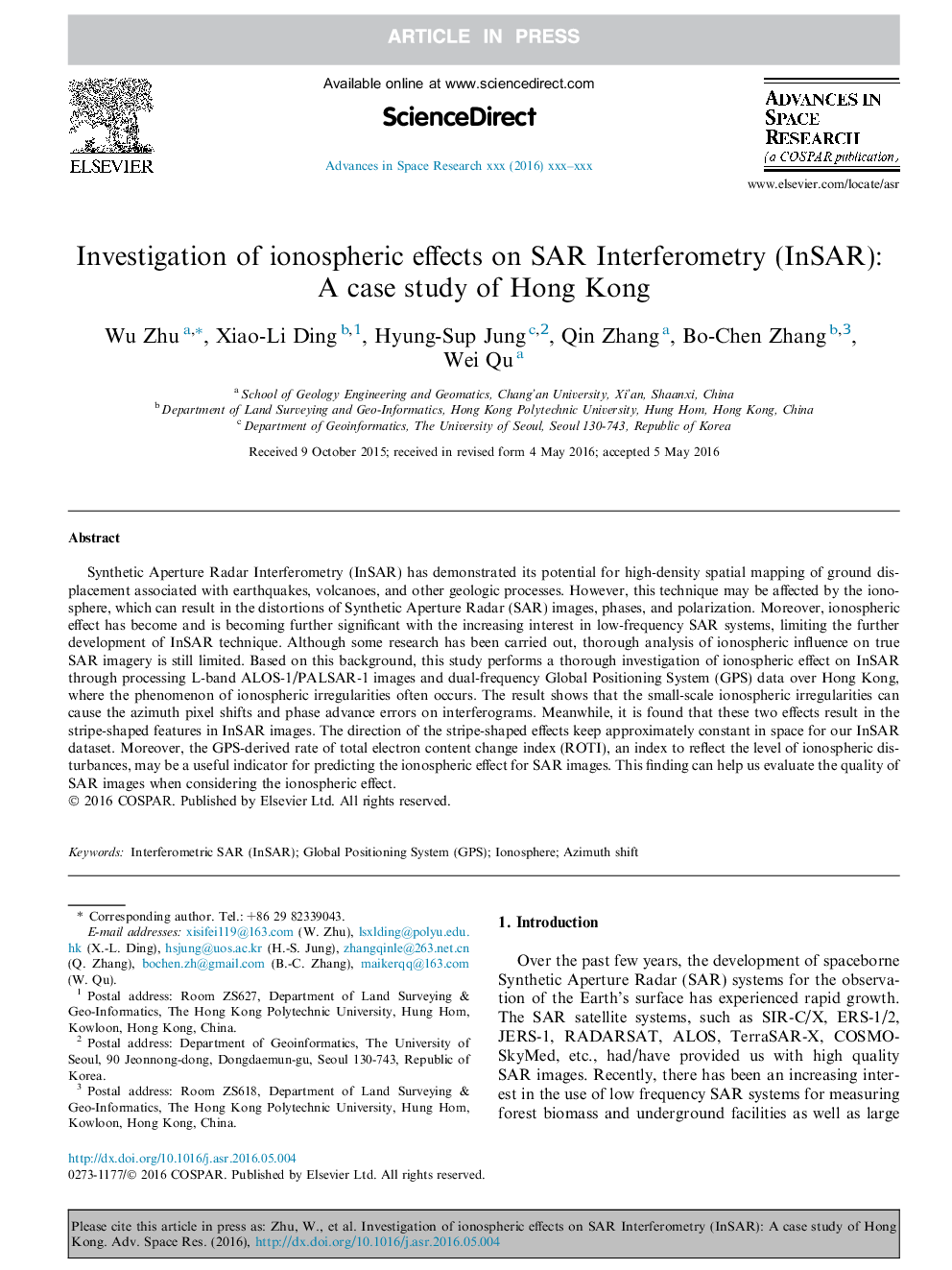| Article ID | Journal | Published Year | Pages | File Type |
|---|---|---|---|---|
| 1763268 | Advances in Space Research | 2016 | 13 Pages |
Abstract
Synthetic Aperture Radar Interferometry (InSAR) has demonstrated its potential for high-density spatial mapping of ground displacement associated with earthquakes, volcanoes, and other geologic processes. However, this technique may be affected by the ionosphere, which can result in the distortions of Synthetic Aperture Radar (SAR) images, phases, and polarization. Moreover, ionospheric effect has become and is becoming further significant with the increasing interest in low-frequency SAR systems, limiting the further development of InSAR technique. Although some research has been carried out, thorough analysis of ionospheric influence on true SAR imagery is still limited. Based on this background, this study performs a thorough investigation of ionospheric effect on InSAR through processing L-band ALOS-1/PALSAR-1 images and dual-frequency Global Positioning System (GPS) data over Hong Kong, where the phenomenon of ionospheric irregularities often occurs. The result shows that the small-scale ionospheric irregularities can cause the azimuth pixel shifts and phase advance errors on interferograms. Meanwhile, it is found that these two effects result in the stripe-shaped features in InSAR images. The direction of the stripe-shaped effects keep approximately constant in space for our InSAR dataset. Moreover, the GPS-derived rate of total electron content change index (ROTI), an index to reflect the level of ionospheric disturbances, may be a useful indicator for predicting the ionospheric effect for SAR images. This finding can help us evaluate the quality of SAR images when considering the ionospheric effect.
Related Topics
Physical Sciences and Engineering
Earth and Planetary Sciences
Space and Planetary Science
Authors
Wu Zhu, Xiao-Li Ding, Hyung-Sup Jung, Qin Zhang, Bo-Chen Zhang, Wei Qu,
